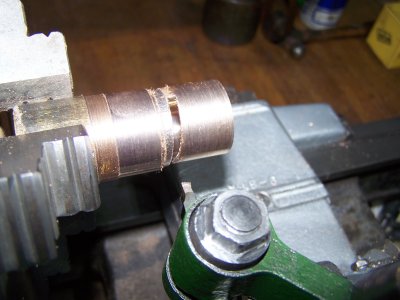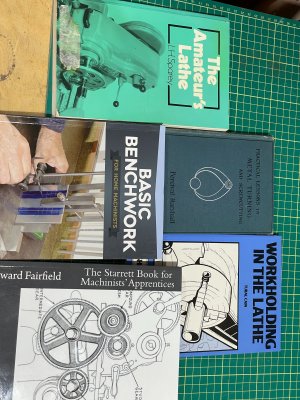Well parting tools certainly can make a difference but make sure you've got all the basics covered first...angles, rigidity, speed, feed, lube, etc. The smaller the lathe the more important all those items are.
I’ll second the above. All the advice I can give is derived from advice I have seen from the experienced plus hard earned experience (learning what not to do by doing it, LOL!). The reference books are good too.
To expand, I think the largest fundamental is rigidity. Your tool must not deflect while in contact with the work piece. No chatter either!
You need to keep stick out to a minimum to give the work piece the least opportunity to pull the cutting edge into the work piece. Less leverage. I see you have a lantern tool post, I have very little experience with those but it looks like it’s effectively giving you a fair bit of stick out so there’s a gain you can make if you switch to a newer style QCTP.
You need to have as much play removed from the mechanisms (slides etc.) so that there’s no play to give the tool the opportunity to pull into the work piece. Lock down the carriage and compound if you can and make sure the cross is tight enough. Gibs etc.
The cutting edge must be on centre and the edge must be ground with proper clearances/angles to fit the material (brass/steel etc.) I keep talking about pulling the tool in, cutting angles & clearances are a big part of that too. Less back rake for brass etc.
One more thing I have found that makes a big difference is honing the cutting edge with a diamond hone (easy lap). You get a very sharp and even cutting edge without the “grain” witness from the grinding wheel. Like a finely honed knife.
Speed wise, start with the slowest speed & feed you can, bull low if you can and use powered cross for consistency. You may be able to up the speed as you have success but slowest is a good fundamental starting point. You can cut tubing without drama.
Lubrication is necessary, don’t be stingy but I haven’t found any miracle juice. You’ll hear it if you’re not giving it enough.
My cutting tools are HSS parting blades, hand ground and honed, no pre-made inserts and you can tailor the edge to the material.
On my Standard Modern I built a massive quick change tool post/holder that works really well compared to the Dicksons on my Myford. The Myford is smaller/lighter and more sensitive compared to the SM. My SM tool post is in post 49 of
This thread.
Well, there you have the bulk of my experience. Go ahead and experiment until you see progress, soak up the experience and find out what works for you. There are several very experienced voices around here, I’m sure they’ll speak up and fill in what I missed, LOL!
D




